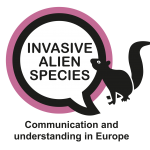Home » Pet Species Cluster (IAS)
Pet Species Cluster

Introduction to the Pet species cluster
Pet ownership has grown in recent decades and the trade in exotic (alien) animals is an important economic sector globally. Some of these animals are released or escape confinement while in the care of importers, wholesalers, retailers or owners. A small proportion of these animals are able to establish in the wild and become invasive alien species. Such invasive alien species introduced through the pet trade may adversely impact other species and ecosystems and also economies and human health.
For example, tree squirrels, such as Pallas’s squirrel Callosciurus erythraeus and Finlayson’s squirrel C. finlaysonii, can escape captivity or be released and form large populations and cause damage to parks, gardens and forests through bark stripping of trees.
They can also impact other species through competition for food and space or transmission of disease. Many populations of well-known invasive alien birds, such as Egyptian geese Alopochen aegyptiaca, ruddy duck Oxyura jamaicensis and sacred ibis Threskiornis aethiopicus, originate from animals kept in wildfowl collections.
American bullfrog Lithobates catesbeianus were kept in garden ponds for ornamental purposes but impact on native amphibian populations through competition, predation and disease transmission, as well as on other animals, such as some fish species.
Aim of Establishing the Pet Species Stakeholder IAS Platform
The objective of the pet species platform is to foster a constructive dialogue within and among stakeholder organisations and competent authorities involved in the cluster of pathways (both on “impacting” and “impact” sides) and to develop joint initiatives to address the problem.
- discuss IAS and the required prevention measures related to the cluster of pathways,
- discuss IAS of Union concern and the improvement of the implementation of the prevention measures provided for in the IAS Regulation,
- discuss options for stakeholders involved in the introduction and spread of IAS (cause) which may help them to continue and expand their activities, while reducing the associated risks (e.g. by replacing alien species by native species) and contributing to halting the loss of biodiversity,
- co-operate on the development and joint implementation of an IAS prevention campaign for the aquatic ornamental cluster,
- discuss how prevention and control of IAS can support the objectives of nature conservation in protected areas, particularly in Natura 2000 areas.
The platform is not intended to act as a European Commission “Expert Group” or a similar entity with consultative functions but instead aim to exchange good practice between one another and come up with new ways to deal with IAS.
Role of the Project Team/Platform Secretariat
The team’s role is an advisory neutral third party in support of all the other parties. The solutions will have to be discussed and agreed between the stakeholders. The project team will facilitate this dialogue and provide input from experts on IAS as desired by the participating platform members.
- Neutrality with regard to the issues under discussion. The team would only make suggestions on the process to be followed but this would also be adaptable depending on requests of the participants.
- Equality in supporting every platform member equally in terms of understanding what is important to her/ to him. Considering all viewpoints as being equally valid and taking proper account of knowledge shared from different sources.
- Transparency with regard to the decisions the team makes on the process and the reasons for making them
- Confidentiality with regard to who provides the team with what information. Information gathered (e.g. through interviews) will be reported to the Commission as well as to the other stakeholders involved but no information will be linked to a specific individual.